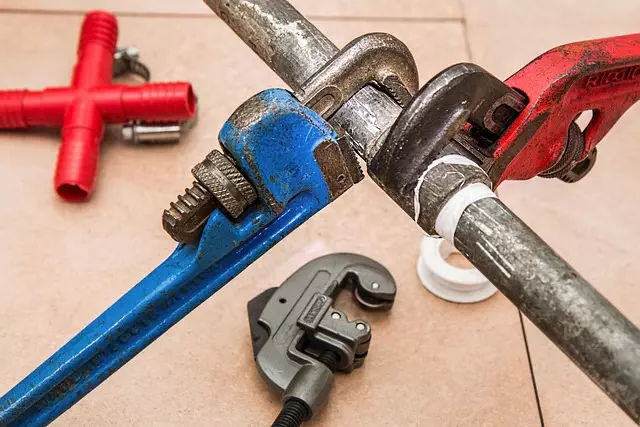Residential piering, particularly stem wall repair, is a vital technique for reinforcing homes in unstable soil conditions. By addressing damaged stem walls and installing supporting piers, this method increases structural stability, prevents erosion, and ensures the long-term integrity of home foundations. Stem wall repair, involving strengthening with steel rods or concrete injections, mitigates environmental damage from moisture intrusion and ground movement. It optimizes energy efficiency, reduces maintenance costs, and safeguards homes from natural stressors, extending property lifespans. Regular maintenance, including prompt crack repair and preventative measures like proper drainage, is crucial for the longevity of these piering solutions.
Residential piering, particularly stem wall repair, is a critical component of home foundation maintenance. Understanding these solutions is essential for addressing common causes of stem wall damage, such as soil erosion, poor initial construction, or settling. This article explores various piering methods, highlights their benefits, and provides a step-by-step guide to stem wall repair. Additionally, learn long-term maintenance tips to ensure your home’s structural integrity for years to come, focusing on effective stem wall repair techniques.
Understanding Residential Piering and Stem Wall Repair

Residential piering is a structural technique designed to enhance the stability and support of homes, particularly in areas prone to settling or shifting soil conditions. This method involves installing supporting piers beneath the foundation, distributing the weight of the structure evenly across a broader base. Stem wall repair, a specific aspect of piering, addresses issues related to stem walls—vertical retaining walls built against the foundation to prevent soil erosion and maintain structural integrity.
Over time, stem walls can suffer damage due to various factors like poor initial construction, changes in soil moisture levels, or excessive weight from above. Stem Wall Repair involves assessing and mitigating these issues by either reinforcing existing walls or replacing damaged sections with new materials. This process not only enhances the structural soundness of the home but also ensures the longevity of its foundation.
Common Causes of Stem Wall Damage

Stem walls, a crucial component in many residential structures, often bear the brunt of various environmental factors and structural stresses, leading to damage over time. One of the most common causes of stem wall repair is ground movement, particularly in areas prone to expansive clay soils. As these soils absorb water, they expand, exerting pressure on the walls and causing cracks or misalignments. This can result in noticeable gaps at the foundation level, compromising the structural integrity of the entire building.
Another frequent issue is moisture intrusion, which can originate from various sources such as faulty waterproofing, improper drainage, or heavy rainfall. Prolonged exposure to water can weaken the stem wall over time, leading to rot, mold, and even catastrophic collapse in severe cases. Prompt identification and addressing of these problems through professional stem wall repair services are essential to prevent further damage and maintain the longevity of residential structures.
Types of Piering Solutions for Homes

When it comes to residential pier solutions, there are several options designed to address various foundation issues. One common and effective method is stem wall repair, which involves reinforcing and restoring exterior walls that support the structure’s foundation. This technique is particularly useful for homes with concrete or masonry construction, where vertical supports need reinforcement to prevent further damage.
Stem wall repair can take many forms, including the installation of new steel rods or cables to enhance structural integrity, as well as the use of specialized concrete or polymeric injections to fill cracks and gaps, offering long-lasting support and stability. These solutions not only fix immediate problems but also help to prevent future foundation shifts, ensuring the home remains secure and structurally sound for years to come.
The Benefits of Choosing the Right Piering Method

Choosing the right piering method for residential structures is paramount for several reasons. Effective pier solutions, such as stem wall repair, offer structural integrity, ensuring homes remain stable and secure against environmental factors like dense foliage or seismic activity. The appropriate technique can also significantly extend the lifespan of a property by preventing costly damage from occurring over time.
Additionally, the right piering method enhances energy efficiency and indoor comfort. Well-designed stem wall repairs, for instance, can improve insulation, reducing heat transfer and tempering interior temperatures. This leads to lower energy bills and creates a more comfortable living environment. Choosing the optimal solution from the outset thus saves on maintenance costs in the long run.
Step-by-Step Process of Stem Wall Repair

The process of stem wall repair involves several meticulous steps to ensure structural integrity and longevity. It begins with a thorough inspection, identifying any cracks or damage in the stem walls. Next, the area is prepared by removing loose debris and cleaning the surface to create a clean canvas for repairs. This preparation stage is crucial as it guarantees that the new materials bond effectively with the existing structure.
Once ready, a mix of mortar and reinforcement mesh is applied to fill any gaps or cracks. The mixture is carefully troweled into place, ensuring even distribution and compacting it to create a solid patch. Following this, the repaired area is left to cure, allowing the mortar to set fully. This step is essential for the strength and durability of the repair.
Long-Term Maintenance and Prevention Tips

Regular maintenance is key to ensuring your residential pier structure remains robust and stable over time. One crucial aspect is addressing stem wall repair promptly, as it directly impacts the overall integrity of the piers. Cracks or signs of deterioration in the stem walls should be treated early to prevent further damage. This can include applying appropriate sealants, reinforcing weak areas, or even replacing damaged sections to maintain the structural soundness of the pier.
Preventative measures are also vital to long-term stability. Proper drainage around the piers is essential to deterring moisture intrusion, which can lead to rot and weaken the structure. Regular inspections should be conducted to identify potential issues early on, allowing for timely repairs. Additionally, ensuring proper compaction and stabilization of the soil base before construction or during retrofits can significantly contribute to the longevity of residential pier solutions.
